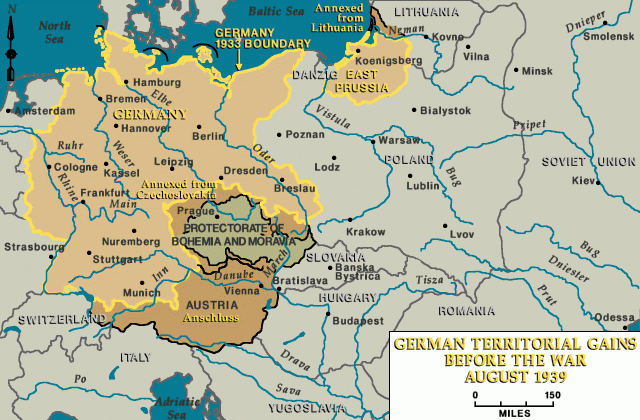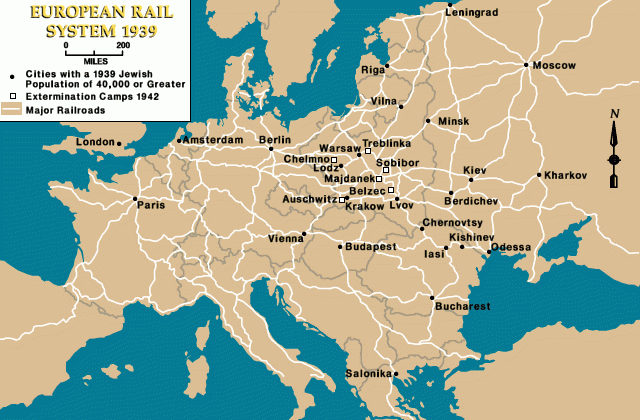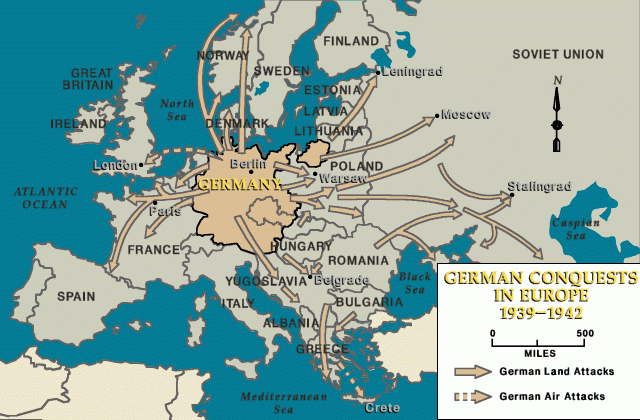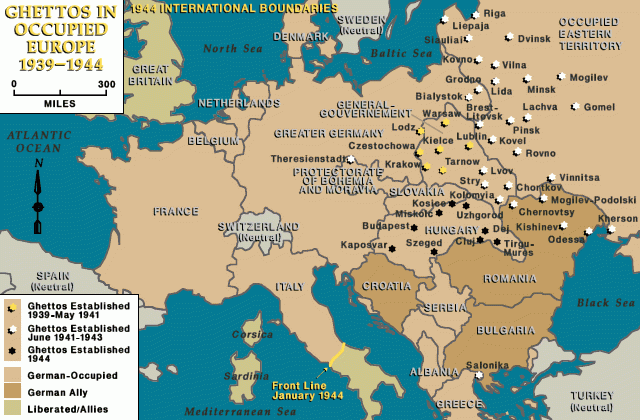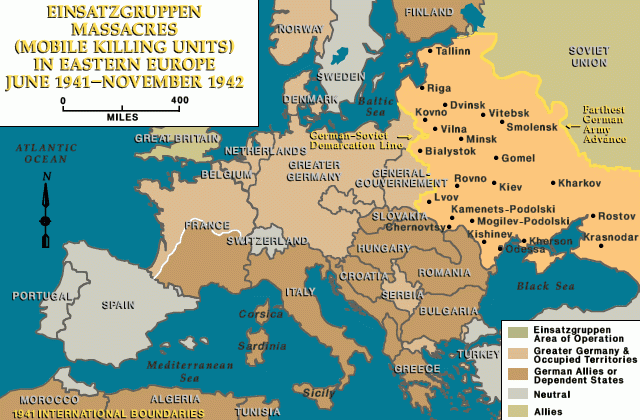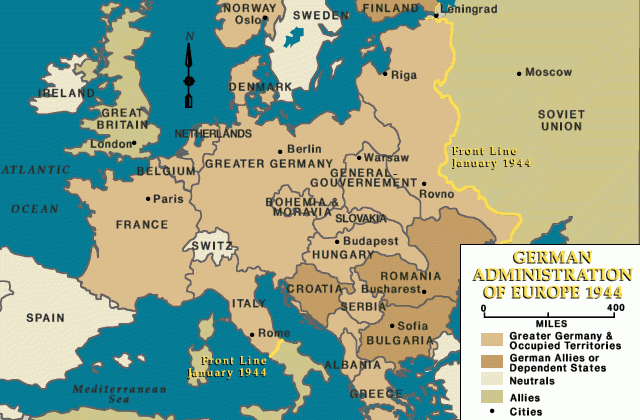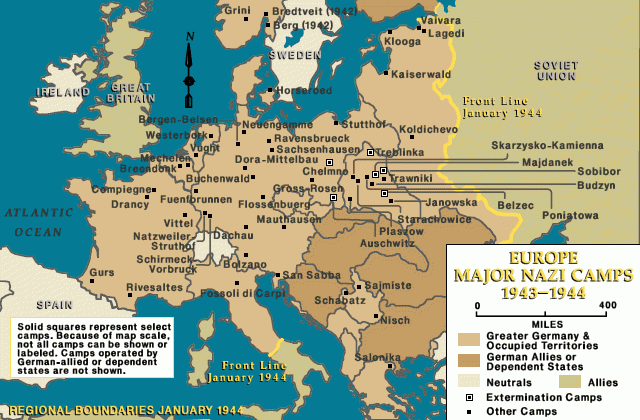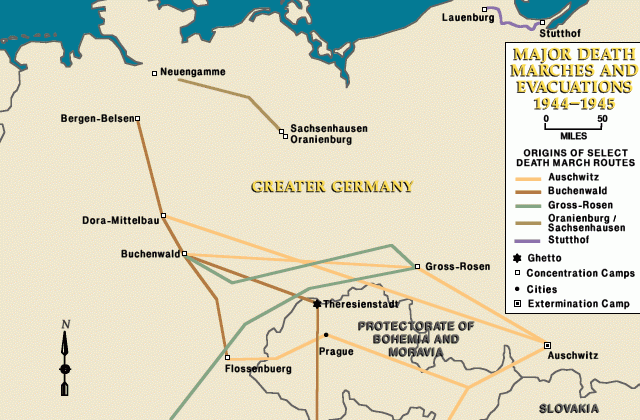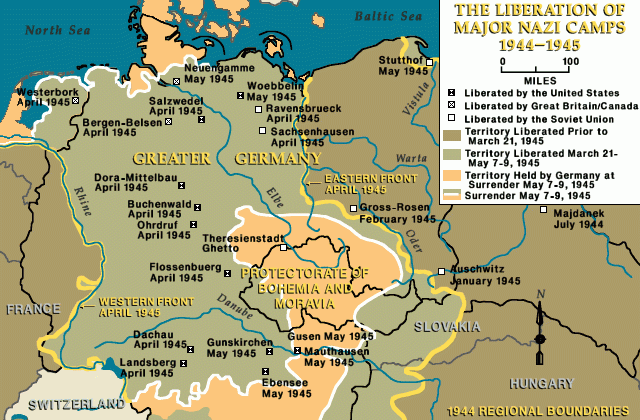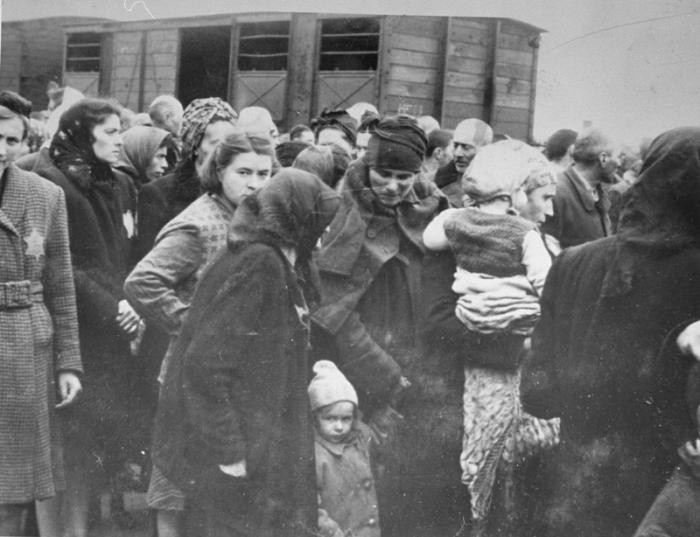
Introduction to the Holocaust
The Holocaust was the systematic, state-sponsored persecution and murder of six million European Jews by the Nazi German regime and its allies and collaborators. The Holocaust was an evolving process that took place throughout Europe between 1933 and 1945.
Key Facts
-
1
Antisemitism was at the foundation of the Holocaust. Antisemitism, the hatred of or prejudice against Jews, was a basic tenet of Nazi ideology. This prejudice was also widespread throughout Europe.
-
2
Nazi Germany’s persecution of Jews evolved and became increasingly more radical between 1933 and 1945. This radicalization culminated in the mass murder of six million Jews.
-
3
During World War II, Nazi Germany and its allies and collaborators killed nearly two out of every three European Jews using deadly living conditions, brutal mistreatment, mass shootings and gassings, and specially designed killing centers.
The Holocaust (1933–1945) was the systematic, state-sponsored persecution and murder of six million European Jews by the Nazi German regime and its allies and collaborators. In addition to perpetrating the Holocaust, Nazi Germany also persecuted and murdered millions of other victims.
What was the Holocaust?
The United States Holocaust Memorial Museum defines the years of the Holocaust as 1933–1945. The Holocaust era began in January 1933 when Adolf Hitler and the Nazi Party came to power in Germany. It ended in May 1945, when the Allied Powers defeated Nazi Germany in World War II. The Holocaust is also sometimes referred to as “the Shoah,” the Hebrew word for “catastrophe.”
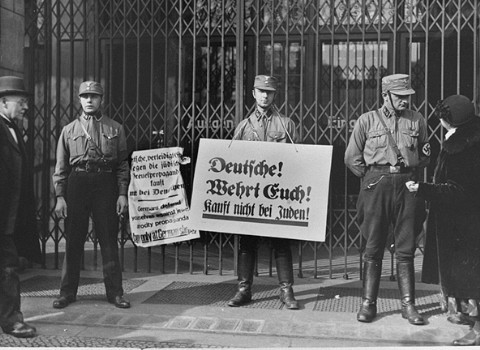
When they came to power in Germany, the Nazis did not immediately start to carry out the mass murder of Jews. However, they quickly began using the government to target and exclude Jews from German society. Among other antisemitic measures, the Nazi German regime enacted discriminatory laws and organized violence targeting Germany’s Jews. The Nazi persecution of Jews became increasingly radical between 1933 and 1945. This radicalization culminated in a plan that Nazi leaders referred to as the "Final Solution to the Jewish Question.” The “Final Solution” was the organized and systematic mass murder of European Jews. The Nazi German regime implemented this genocide between 1941 and 1945.
By the end of the Holocaust, the Nazi German regime and their allies and collaborators had murdered six million European Jews.
Why did the Nazis target Jews?
The Nazis targeted Jews because the Nazis were radically antisemitic. This means that they were prejudiced against and hated Jews. In fact, antisemitism was a basic tenet of their ideology and at the foundation of their worldview.
The Nazis falsely accused Jews of causing Germany’s social, economic, political, and cultural problems. In particular, they blamed them for Germany’s defeat in World War I (1914–1918). Some Germans were receptive to these Nazi claims. Anger over the loss of the war and the economic and political crises that followed contributed to increasing antisemitism in German society. The instability of Germany under the Weimar Republic (1918–1933), the fear of communism, and the economic shocks of the Great Depression also made many Germans more open to Nazi ideas, including antisemitism.
However, the Nazis did not invent antisemitism. Antisemitism is an old and widespread prejudice that has taken many forms throughout history. In Europe, it dates back to ancient times. In the Middle Ages (500–1400), prejudices against Jews were primarily based in early Christian belief and thought, particularly the myth that Jews were responsible for the death of Jesus. Suspicion and discrimination rooted in religious prejudices continued in early modern Europe (1400–1800). At that time, leaders in much of Christian Europe isolated Jews from most aspects of economic, social, and political life. This exclusion contributed to stereotypes of Jews as outsiders. As Europe became more secular, many places lifted most legal restrictions on Jews. This, however, did not mean the end of antisemitism. In addition to religious antisemitism, other types of antisemitism took hold in Europe in the 18th and 19th centuries. These new forms included economic, nationalist, and racial antisemitism. In the 19th century, antisemites falsely claimed that Jews were responsible for many social and political ills in modern, industrial society. Theories of race, eugenics, and Social Darwinism falsely justified these hatreds. Nazi prejudice against Jews drew upon all of these elements, but especially racial antisemitism. Racial antisemitism is the discriminatory idea that Jews are a separate and inferior race.
![Chart with the title: "Die Nürnberger Gesetze." [Nuremberg Race Laws].](https://encyclopedia.ushmm.org/images/large/423ec6b8-6e77-4854-8f87-41610aa4c747.jpg)
The Nazi Party promoted a particularly virulent form of racial antisemitism. It was central to the party’s race-based worldview. The Nazis believed that the world was divided into distinct races and that some of these races were superior to others. They considered Germans to be members of the supposedly superior “Aryan” race. They asserted that “Aryans” were locked in a struggle for existence with other, inferior races. Further, the Nazis believed that the so-called “Jewish race” was the most inferior and dangerous of all. According to the Nazis, Jews were a threat that needed to be removed from German society. Otherwise, the Nazis insisted, the “Jewish race” would permanently corrupt and destroy the German people. The Nazis’ race-based definition of Jews included many persons who identified as Christians or did not practice Judaism.
Where did the Holocaust take place?
The Holocaust was a Nazi German initiative that took place throughout German- and Axis-controlled Europe. It affected nearly all of Europe’s Jewish population, which in 1933 numbered 9 million people.
The Holocaust began in Germany after Adolf Hitler was appointed chancellor in January 1933. Almost immediately, the Nazi German regime (which called itself the Third Reich) excluded Jews from German economic, political, social, and cultural life. Throughout the 1930s, the regime increasingly pressured Jews to emigrate.
But the Nazi persecution of Jews spread beyond Germany. Throughout the 1930s, Nazi Germany pursued an aggressive foreign policy. This culminated in World War II, which began in Europe in 1939. Prewar and wartime territorial expansion eventually brought millions more Jewish people under German control.
Nazi Germany’s territorial expansion began in 1938–1939. During this time, Germany annexed neighboring Austria and the Sudetenland and occupied the Czech lands. On September 1, 1939, Nazi Germany began World War II (1939–1945) by attacking Poland. Over the next two years, Germany invaded and occupied much of Europe, including western parts of the Soviet Union. Nazi Germany further extended its control by forming alliances with the governments of Italy, Hungary, Romania, and Bulgaria. It also created puppet states in Slovakia and Croatia. Together these countries made up the European members of the Axis alliance, which also included Japan.
By 1942—as a result of annexations, invasions, occupations, and alliances—Nazi Germany controlled most of Europe and parts of North Africa. Nazi control brought harsh policies and ultimately mass murder to Jewish civilians across Europe.
The Nazis and their allies and collaborators murdered six million Jews.
How did Nazi Germany and its allies and collaborators persecute Jewish people?
Between 1933 and 1945, Nazi Germany and its allies and collaborators implemented a wide range of anti-Jewish policies and measures. These policies varied from place to place. Thus, not all Jews experienced the Holocaust in the same way. But in all instances, millions of people were persecuted simply because they were identified as Jewish.
Throughout German-controlled and aligned territories, the persecution of Jews took a variety of forms:
- Legal discrimination in the form of antisemitic laws. These included the Nuremberg Race Laws and numerous other discriminatory laws.
- Various forms of public identification and exclusion. These included antisemitic propaganda, boycotts of Jewish-owned businesses, public humiliation, and obligatory markings (such as the Jewish star badge worn as an armband or on clothing).
- Organized violence. The most notable example is Kristallnacht. There were also isolated incidents and other pogroms (violent riots).
- Physical Displacement. Perpetrators used forced emigration, resettlement, expulsion, deportation, and ghettoization to physically displace Jewish individuals and communities.
- Internment. Perpetrators interned Jews in overcrowded ghettos, concentration camps, and forced-labor camps, where many died from starvation, disease, and other inhumane conditions.
- Widespread theft and plunder. The confiscation of Jews’ property, personal belongings, and valuables was a key part of the Holocaust.
- Forced labor. Jews had to perform forced labor in service of the Axis war effort or for the enrichment of Nazi organizations, the military, and/or private businesses.
Many Jews died as a result of these policies. But before 1941, the systematic mass murder of all Jews was not Nazi policy. Beginning in 1941, however, Nazi leaders decided to implement the mass murder of Europe’s Jews. They referred to this plan as the “Final Solution to the Jewish Question.”
What was the “Final Solution to the Jewish Question”?
The Nazi “Final Solution to the Jewish Question” (“Endlösung der Judenfrage”) was the deliberate and systematic mass murder of European Jews. It was the last stage of the Holocaust and took place from 1941 to 1945. Though many Jews were killed before the "Final Solution" began, the vast majority of Jewish victims were murdered during this period.
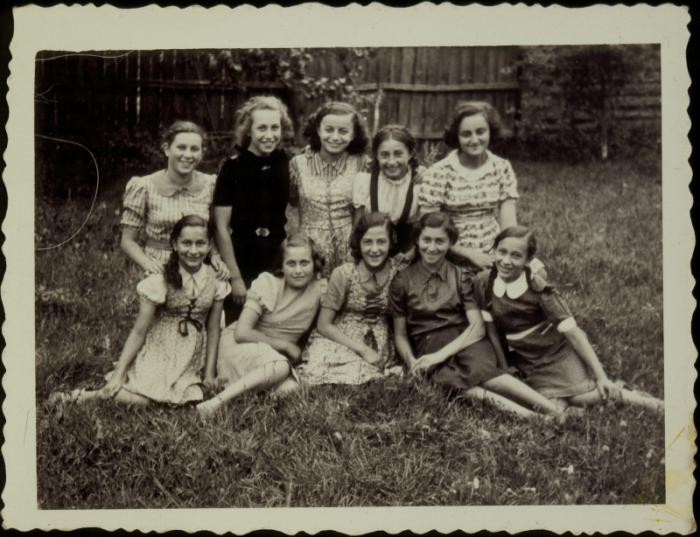
As part of the “Final Solution,” Nazi Germany committed mass murder on an unprecedented scale. There were two main methods of killing. One method was mass shooting. German units carried out mass shootings on the outskirts of villages, towns, and cities throughout eastern Europe. The other method was asphyxiation with poison gas. Gassing operations were conducted at killing centers and with mobile gas vans.
Mass Shootings
The Nazi German regime perpetrated mass shootings of civilians on a scale never seen before. After Germany invaded the Soviet Union in June 1941, German units began to carry out mass shootings of local Jews. At first, these units targeted Jewish men of military age. But by August 1941, they had started massacring entire Jewish communities. These massacres were often conducted in broad daylight and in full view and earshot of local residents.
Mass shooting operations took place in more than 1,500 cities, towns, and villages across eastern Europe. German units tasked with murdering the local Jewish population moved throughout the region committing horrific massacres. Typically, these units would enter a town and round up the Jewish civilians. They would then take the Jewish residents to the outskirts of the town. Next, they would force them to dig a mass grave or take them to mass graves prepared in advance. Finally, German forces and/or local auxiliary units would shoot all of the men, women, and children into these pits. Sometimes, these massacres involved the use of specially designed mobile gas vans. Perpetrators would use these vans to suffocate victims with carbon monoxide exhaust.
Germans also carried out mass shootings at killing sites in occupied eastern Europe. Typically these were located near large cities. These sites included Fort IX in Kovno (Kaunas), the Rumbula and Bikernieki Forests in Riga, and Maly Trostenets near Minsk. At these killing sites, Germans and local collaborators murdered tens of thousands of Jews from the Kovno, Riga, and Minsk ghettos. They also shot tens of thousands of German, Austrian, and Czech Jews at these killing sites. At Maly Trostenets, thousands of victims were also murdered in gas vans.
The German units that perpetrated the mass shootings in eastern Europe included Einsatzgruppen (special task forces of the SS and police), Order Police battalions, and Waffen-SS units. The German military (Wehrmacht) provided logistical support and manpower. Some Wehrmacht units also carried out massacres. In many places, local auxiliary units working with the SS and police participated in the mass shootings. These auxiliary units were made up of local civilian, military, and police officials.
As many as 2 million Jews were murdered in mass shootings or gas vans in territories seized from Soviet forces.
Killing Centers
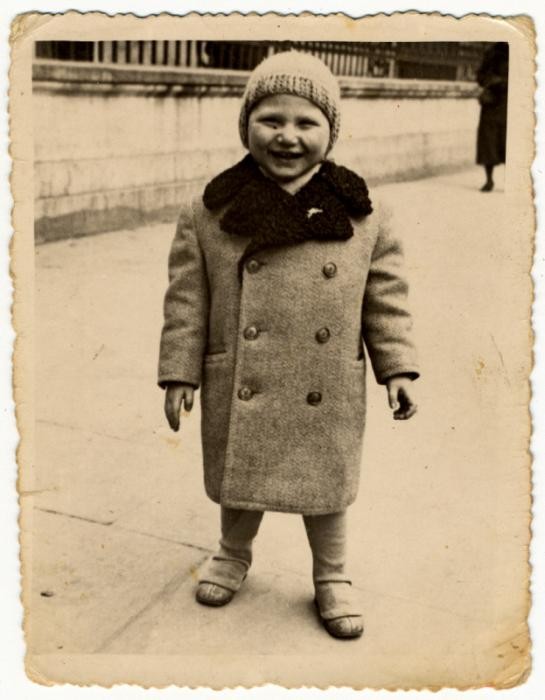
In late 1941, the Nazi regime began building specially designed, stationary killing centers in German-occupied Poland. In English, killing centers are sometimes called “extermination camps” or “death camps.” Nazi Germany operated five killing centers: Chelmno, Belzec, Sobibor, Treblinka, and Auschwitz-Birkenau. They built these killing centers for the sole purpose of efficiently murdering Jews on a mass scale. The primary means of murder at the killing centers was poisonous gas released into sealed gas chambers or vans.
German authorities, with the help of their allies and collaborators, transported Jews from across Europe to these killing centers. They disguised their intentions by calling the transports to the killing centers “resettlement actions” or “evacuation transports.” In English, they are often referred to as “deportations.” Most of these deportations took place by train. In order to efficiently transport Jews to the killing centers, German authorities used the extensive European railroad system, as well as other means of transportation. In many cases the railcars on the trains were freight cars; in other instances they were passenger cars.
The conditions on deportation transports were horrific. German and collaborating local authorities forced Jews of all ages into overcrowded railcars. They often had to stand, sometimes for days, until the train reached its destination. The perpetrators deprived them of food, water, bathrooms, heat, and medical care. Jews frequently died en route from the inhumane conditions.
The vast majority of Jews deported to killing centers were gassed almost immediately after their arrival. Some Jews whom German officials believed to be healthy and strong enough were selected for forced labor.
My mother ran over to me and grabbed me by the shoulders, and she told me "Leibele, I'm not going to see you no more. Take care of your brother."
—Leo Schneiderman describing arrival at Auschwitz, selection, and separation from his family
At all five killing centers, German officials forced some Jewish prisoners to assist in the killing process. Among other tasks, these prisoners had to sort through victims’ belongings and remove victims’ bodies from the gas chambers. Special units disposed of the millions of corpses through mass burial, in burning pits, or by burning them in large, specially designed crematoria.
Nearly 2.7 million Jewish men, women, and children were murdered at the five killing centers.
What were ghettos and why did German authorities create them during the Holocaust?
Ghettos were areas of cities or towns where German occupiers forced Jews to live in overcrowded and unsanitary conditions. German authorities often enclosed these areas by building walls or other barriers. Guards prevented Jews from leaving without permission. Some ghettos existed for years, but others existed only for months, weeks, or even days as holding sites prior to deportation or murder.
German officials first created ghettos in 1939–1940 in German-occupied Poland. The two largest were located in the occupied Polish cities of Warsaw and Lodz (Łódź). Beginning in June 1941, German officials also established them in newly conquered territories in eastern Europe following the German attack on the Soviet Union. German authorities and their allies and collaborators also established ghettos in other parts of Europe. Notably, in 1944, German and Hungarian authorities created temporary ghettos to centralize and control Jews prior to their deportation from Hungary.
The Purpose of the Ghettos
German authorities originally established the ghettos to isolate and control the large local Jewish populations in occupied eastern Europe. Initially, they concentrated Jewish residents from within a city and the surrounding area or region. However, beginning in 1941, German officials also deported Jews from other parts of Europe (including Germany) to some of these ghettos.
Jewish forced labor became a central feature of life in many ghettos. In theory, it was supposed to help pay for the administration of the ghetto as well as support the German war effort. Sometimes, factories and workshops were established nearby in order to exploit the imprisoned Jews for forced labor. The labor was often manual and grueling.
Life in the Ghettos
Life in the ghettos was miserable and dangerous. There was little food and limited sanitation or medical care. Hundreds of thousands of people died by starvation; rampant disease; exposure to extreme temperatures; as well as exhaustion from forced labor. Germans also murdered the imprisoned Jews through brutal beatings, torture, arbitrary shootings, and other forms of arbitrary violence.
Jews in the ghettos sought to maintain a sense of dignity and community. Schools, libraries, communal welfare services, and religious institutions provided some measure of connection among residents. Attempts to document life in the ghettos, such as the Oneg Shabbat archive and clandestine photography, are powerful examples of spiritual resistance. Many ghettos also had underground movements that carried out armed resistance. The most famous of these is the Warsaw ghetto uprising in 1943.
Liquidating the Ghettos
Beginning in 1941–1942, Germans and their allies and collaborators murdered ghetto residents en masse and dissolved ghetto administrative structures. They called this process “liquidation.” It was part of the “Final Solution to the Jewish Question.” The majority of Jews in the ghettos were murdered either in mass shootings at nearby killing sites or after deportation to killing centers. Most of the killing centers were deliberately located near the large ghettos of German-occupied Poland or on easily-accessible railway routes.
Who was responsible for carrying out the Holocaust and the Final Solution?
Many people were responsible for carrying out the Holocaust and the Final Solution.
At the highest level, Adolf Hitler inspired, ordered, approved, and supported the genocide of Europe’s Jews. However, Hitler did not act alone. Nor did he lay out an exact plan for the implementation of the Final Solution. Other Nazi leaders were the ones who directly coordinated, planned, and implemented the mass murder. Among them were Hermann Göring, Heinrich Himmler, Reinhard Heydrich, and Adolf Eichmann.
However, millions of Germans and other Europeans participated in the Holocaust. Without their involvement, the genocide of the Jewish people in Europe would not have been possible. Nazi leaders relied upon German institutions and organizations; other Axis powers; local bureaucracies and institutions; and individuals.
German Institutions, Organizations, and Individuals
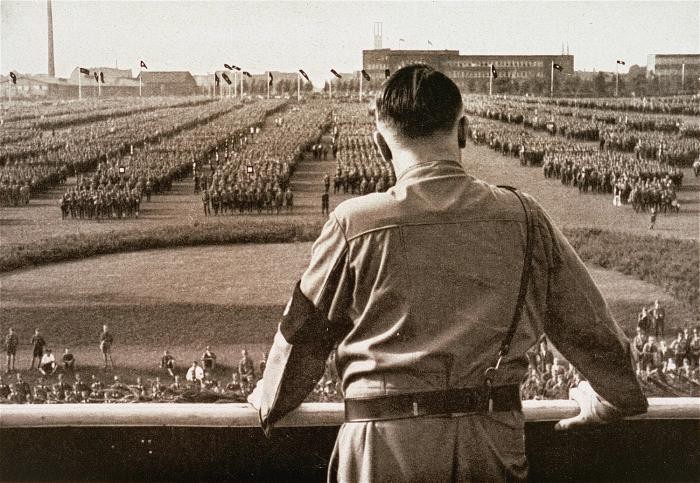
Nazi leaders relied on many German institutions and organizations to help them carry out the Holocaust. Members of Nazi organizations initiated and carried out many anti-Jewish actions before and during World War II. These organizations included the Nazi Party, the SA (Stormtroopers or Brownshirts), and the SS (Schutzstaffel, Protection Squadron). Once the war began, the SS and its police affiliates became especially deadly. Members of the Sicherheitsdienst (the SD), the Gestapo, the Criminal Police (Kripo), and the Order Police played particularly active and deadly roles in the mass murder of Europe’s Jews. Other German institutions involved in carrying out the Final Solution included the German military; the German national railway and healthcare systems; the German civil service and criminal justice systems; and German businesses, insurance companies, and banks.
As members of these institutions, countless German soldiers, policemen, civil servants, lawyers, judges, businessmen, engineers, and doctors and nurses chose to implement the regime’s policies. Ordinary Germans also participated in the Holocaust in a variety of ways. Some Germans cheered as Jews were beaten or humiliated. Others denounced Jews for disobeying racist laws and regulations. Many Germans bought, took, or looted their Jewish neighbors' belongings and property. These Germans’ participation in the Holocaust was motivated by enthusiasm, careerism, fear, greed, self-interest, antisemitism, and political ideals, among other factors.
Non-German Governments and Institutions
Nazi Germany did not perpetrate the Holocaust alone. It relied on the help of its allies and collaborators. In this context, “allies” refers to Axis countries officially allied with Nazi Germany. “Collaborators” refers to regimes and organizations that cooperated with German authorities in an official or semi-official capacity. Nazi Germany’s allies and collaborators included:
- The European Axis Powers and other collaborationist regimes (such as Vichy France). These governments passed their own antisemitic legislation and cooperated with German goals.
- German-backed local bureaucracies, especially local police forces. These organizations helped round up, intern, and deport Jews even in countries not allied with Germany, such as the Netherlands.
- Local auxiliary units made up of military and police officials and civilians. These German-backed units participated in massacres of Jews in eastern Europe (often voluntarily).
The terms “allies” and “collaborators” can also refer to individuals affiliated with these governments and organizations.
Individuals across Europe
Throughout Europe, individuals who had no governmental or institutional affiliation and did not directly participate in murdering Jews also contributed to the Holocaust.
One of the deadliest things that neighbors, acquaintances, colleagues, and even friends could do was denounce Jews to Nazi German authorities. An unknown number chose to do so. They revealed Jews’ hiding places, unmasked false Christian identities, and otherwise identified Jews to Nazi officials. In doing so, they brought about their deaths. These individuals’ motivations were wide-ranging: fear, self-interest, greed, revenge, antisemitism, and political and ideological beliefs.
Individuals also profited from the Holocaust. Non-Jews sometimes moved into Jews’ homes, took over Jewish-owned businesses, and stole Jews’ possessions and valuables. This was part of the widespread theft and plunder that accompanied the genocide.
Most often individuals contributed to the Holocaust through inaction and indifference to the plight of their Jewish neighbors. Sometimes these individuals are called bystanders.
Who were the other victims of Nazi persecution and mass murder?
The Holocaust specifically refers to the systematic, state-sponsored persecution and murder of six million Jews. However, there were also millions of other victims of Nazi persecution and murder. In the 1930s, the regime targeted a variety of alleged domestic enemies within German society. As the Nazis extended their reach during World War II, millions of other Europeans were also subjected to Nazi brutality.
The Nazis classified Jews as the priority “enemy.” However, they also targeted other groups as threats to the health, unity, and security of the German people. The first group targeted by the Nazi regime consisted of political opponents. These included officials and members of other political parties and trade union activists. Political opponents also included people simply suspected of opposing or criticizing the Nazi regime. Political enemies were the first to be incarcerated in Nazi concentration camps. Jehovah’s Witnesses were also incarcerated in prisons and concentration camps. They were arrested because they refused to swear loyalty to the government or serve in the German military.
The Nazi regime also targeted Germans whose activities were deemed harmful to German society. These included men accused of homosexuality, persons accused of being professional or habitual criminals, and so-called asocials (such as people identified as vagabonds, beggars, prostitutes, pimps, and alcoholics). Tens of thousands of these victims were incarcerated in prisons and concentration camps. The regime also forcibly sterilized and persecuted Black people in Germany.
People with disabilities were also victimized by the Nazi regime. Before World War II, Germans considered to have supposedly unhealthy hereditary conditions were forcibly sterilized. Once the war began, Nazi policy radicalized. People with disabilities, especially those living in institutions, were considered both a genetic and a financial burden on Germany. These people were targeted for murder in the so-called Euthanasia Program.
The Nazi regime employed extreme measures against groups considered to be racial, civilizational, or ideological enemies. This included Roma (Gypsies), Poles (especially the Polish intelligentsia and elites), Soviet officials, and Soviet prisoners of war. The Nazis perpetrated mass murder against these groups.
How did the Holocaust end?
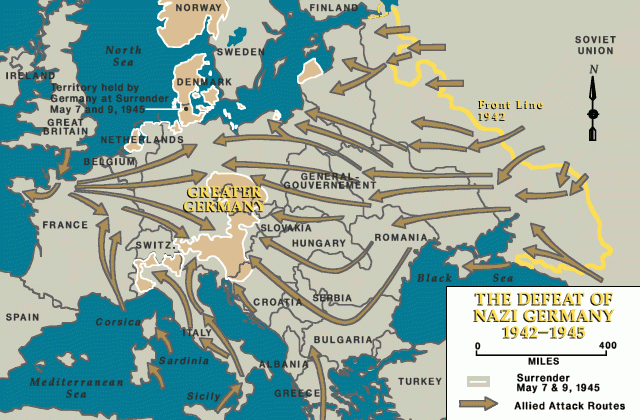
The Holocaust ended in May 1945 when the major Allied Powers (Great Britain, the United States, and the Soviet Union) defeated Nazi Germany in World War II. As Allied forces moved across Europe in a series of offensives, they overran concentration camps. There they liberated the surviving prisoners, many of whom were Jews. The Allies also encountered and liberated the survivors of so-called death marches. These forced marches consisted of groups of Jewish and non-Jewish concentration camp inmates who had been evacuated on foot from camps under SS guard.
But liberation did not bring closure. Many Holocaust survivors faced ongoing threats of violent antisemitism and displacement as they sought to build new lives. Many had lost family members, while others searched for years to locate missing parents, children, and siblings.
How did some Jews survive the Holocaust?
Despite Nazi Germany’s efforts to murder all the Jews of Europe, some Jews survived the Holocaust. Survival took a variety of forms. But, in every case, survival was only possible because of an extraordinary confluence of circumstances, choices, help from others (both Jewish and non-Jewish), and sheer luck.
Survival outside of German-Controlled Europe
Some Jews survived the Holocaust by escaping German-controlled Europe. Before World War II began, hundreds of thousands of Jews emigrated from Nazi Germany despite significant immigration barriers. Those who immigrated to the United States, Great Britain, and other areas that remained beyond German control were safe from Nazi violence. Even after World War II began, some Jews managed to escape German-controlled Europe. For example, approximately 200,000 Polish Jews fled the German occupation of Poland. These Jews survived the war under harsh conditions after Soviet authorities deported them further east into the interior of the Soviet Union.
Survival in German-Controlled Europe
A smaller number of Jews survived inside German-controlled Europe. They often did so with the help of rescuers. Rescue efforts ranged from the isolated actions of individuals to organized networks, both small and large. Throughout Europe, there were non-Jews who took grave risks to help their Jewish neighbors, friends, and strangers survive. For example, they found hiding places for Jews, procured false papers that offered protective Christian identities, or provided them with food and supplies. Other Jews survived as members of partisan resistance movements. Finally, some Jews managed, against enormous odds, to survive imprisonment in concentration camps, ghettos, and even killing centers.
Aftermath
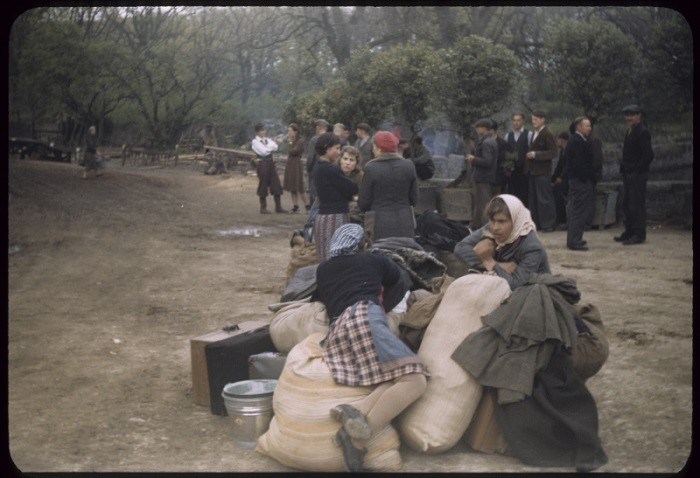
While the Holocaust ended with the war, the legacy of terror and genocide did not. By the end of World War II, six million Jews and millions of others were dead. Nazi Germany and its allies and collaborators had devastated or completely destroyed thousands of Jewish communities across Europe.
In the aftermath of the Holocaust, those Jews who survived were often confronted with the traumatic reality of having lost their entire families and communities. Some were able to go home and chose to rebuild their lives in Europe. Many others were afraid to do so because of postwar violence and antisemitism. In the immediate postwar period, those who could not or would not return home often found themselves living in displaced persons camps. There, many had to wait years before they were able to immigrate to new homes.
In the aftermath of the Holocaust, the world has struggled to come to terms with the horrors of the genocide, to remember the victims, and to hold perpetrators responsible. These important efforts remain ongoing.
Footnotes
-
Footnote reference1.
In this context, “allies” refers to Axis countries officially allied with Nazi Germany. “Collaborators” refers to regimes and organizations that cooperated with German authorities in an official or semi-official capacity. These German-backed collaborators included some local police forces, bureaucracies, and paramilitary units. The terms “allies” and “collaborators” can also refer to individuals affiliated with these governments and organizations.
Critical Thinking Questions
What can we learn from the massive size and scope of the Holocaust?
Across Europe, the Nazis found countless willing helpers who collaborated or were complicit in their crimes. What motives and pressures led so many individuals to persecute, to murder, or to abandon their fellow human beings?
Were there warning signs of what was to come before the Nazis came to power in 1933? Before the start of mass killing in 1941?


